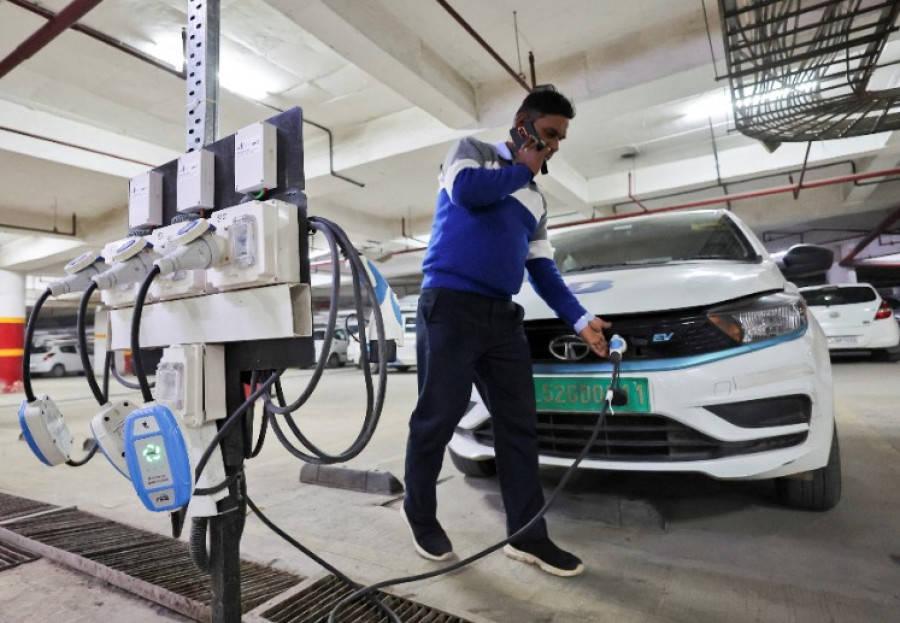India’s ambitious electric vehicle (EV) targets have sparked significant excitement among policymakers, manufacturers, and consumers alike. The vision is clear: transition away from internal combustion engines (ICE) to electric mobility, reducing the country’s carbon footprint, dependence on imported oil, and urban pollution. By 2030, the government aims for electric vehicles to constitute a substantial portion of new vehicle sales across two-wheelers, three-wheelers, and passenger cars. However, the journey is riddled with challenges, notably in the development of charging infrastructure and securing reliable lithium supply chains.
Just as players in a lucky jet real money game must navigate unpredictability and scarcity to emerge victorious, India’s EV sector faces a complex and evolving landscape where supply constraints and infrastructure gaps could significantly influence the nation’s ability to meet its electrification targets.
India’s Electric Vehicle Ambitions: Scope and Strategy
India’s National Electric Mobility Mission (NEMM) and Faster Adoption and Manufacturing of Hybrid and Electric Vehicles (FAME) schemes provide the policy backbone for EV adoption. The target includes 30% electric vehicle penetration in the two-wheeler segment, 40% in three-wheelers, and 30% in passenger vehicles by 2030.
To achieve these, the government has incentivized local manufacturing through production-linked incentives (PLI), mandated fuel-efficiency norms pushing OEMs toward EV offerings, and initiated subsidies on electric two-wheelers and public transport fleets. Major automakers have responded with plans to launch hundreds of electric models tailored for India’s unique urban and rural markets.
However, moving from intent to impact requires solving two intertwined bottlenecks: building a nationwide, accessible charging network and securing lithium, a critical raw material for lithium-ion batteries.
The Charging Infrastructure Conundrum
One of the most visible and pressing challenges for EV adoption is the establishment of a robust charging infrastructure. Unlike petrol stations that have decades of evolution, EV chargers are a nascent market requiring rapid scale-up and standardization.
India currently operates a few thousand public charging points, heavily concentrated in metro cities such as Delhi, Mumbai, Bengaluru, and Hyderabad. This is woefully insufficient for millions of expected EVs over the next decade.
Challenges in expanding the charging network include:
High Capital Costs: Installing fast-charging stations demands substantial investment in power electronics, grid upgrades, and real estate. Private players often hesitate without clear revenue models.
Grid Capacity and Stability: Many Indian cities face stressed power grids, making the integration of high-demand chargers complex. Upgrading transformers and substations is essential but expensive and time-consuming.
Diverse Vehicle Ecosystem: India’s vehicle mix ranges from scooters to buses. Providing chargers that cater to different voltage and connector standards complicates planning.
Rural and Semi-Urban Reach: Extending charging infrastructure beyond urban pockets remains challenging due to lower population density and uncertain demand.
To address these, the government’s plans include public-private partnerships to build charging corridors along highways and urban clusters, incentives for fast-charging networks, and grid modernization projects. However, implementation speed and coordination between ministries, state utilities, and private firms will be crucial.
Lithium Supply: The Achilles’ Heel of India’s EV Dream
Lithium-ion batteries dominate the EV market due to their energy density and lifecycle advantages. Lithium, the core component, is thus a strategic resource for India’s EV ambitions.
India currently imports nearly all of its lithium, mainly from Australia, Chile, and China. This dependence exposes the supply chain to geopolitical risks, price volatility, and trade disruptions—factors that can significantly increase EV costs or delay manufacturing.
Compounding the challenge, global lithium demand is skyrocketing. Electric vehicle sales worldwide surged dramatically, putting pressure on existing lithium mines and fueling competition among nations and companies. This demand-supply imbalance is projected to persist well into the 2030s.
India’s options to navigate lithium scarcity include:
Sourcing and Diplomacy: Securing long-term lithium supply contracts and investing in lithium mining projects abroad, especially in politically stable countries.
Domestic Exploration: Geological surveys are underway to identify lithium deposits within India, notably in Jammu and Kashmir and Karnataka, though commercial extraction will take years.
Battery Recycling: Developing infrastructure for recycling lithium from spent batteries can reduce dependency on new extraction and alleviate environmental impacts.
Alternative Battery Technologies: Investing in research on solid-state batteries, sodium-ion, and other chemistries that reduce or eliminate lithium reliance.
Manufacturing and Technology Development
Beyond raw materials and charging stations, domestic manufacturing capacity for batteries and electric vehicles is a key pillar of India’s strategy. The government’s PLI schemes offer incentives for lithium-ion battery factories and EV assembly plants.
Currently, India imports most battery cells and packs. Building local supply chains requires substantial investment in upstream processing, including cathode and anode material production, and skilled workforce development.
Automakers face the dual challenge of producing affordable EVs while meeting Indian consumers’ expectations for range, reliability, and performance. Innovations in battery management systems, lightweight materials, and vehicle design will be critical to making EVs competitive with ICE vehicles on cost and convenience.
Consumer Adoption: Beyond Affordability
While price remains a major factor, consumer adoption of EVs in India hinges on several interconnected aspects:
Range Anxiety: Limited driving range and lack of charging options deter many potential buyers.
Charging Time: Long charging times compared to refueling gasoline vehicles require technological and infrastructure improvements.
Awareness and Trust: Consumers need better education about EV benefits, maintenance, and incentives. Positive ownership experiences can accelerate word-of-mouth adoption.
Used EV Market: The development of a robust second-hand EV market can make electric mobility accessible to lower-income groups.
Manufacturers and policymakers are focusing on solutions such as fast-charging networks, battery swapping stations, and financing models to lower upfront costs.
The Role of Public Transport and Commercial Fleets
Public transport and commercial vehicles represent a significant opportunity for EV adoption and emissions reduction in India’s congested cities. Electric buses, three-wheelers, and last-mile delivery vehicles can benefit from centralized charging and economies of scale.
Government procurement programs, subsidies, and concessional financing are encouraging fleet operators to transition to electric vehicles. Successful deployments in cities like Bengaluru and Pune provide case studies on operational savings and air quality improvements.
Scaling electric mobility in public and commercial sectors also helps drive demand for batteries and charging infrastructure, creating positive feedback loops for the industry.
Policy and Regulatory Landscape: Enablers and Obstacles
India’s policy environment for EVs has evolved rapidly, balancing incentives with fiscal discipline. Key policies include FAME-II subsidies, PLI schemes for battery manufacturing, and state-level EV promotion policies.
However, policy fragmentation across states, inconsistent incentives, and regulatory uncertainty on issues like battery disposal and charging tariffs create hurdles. Coordination among central ministries, state governments, utilities, and industry stakeholders is necessary to ensure coherent, long-term support.
Tariff structures for electricity used in EV charging also vary, affecting the cost advantage of electric mobility. Clear guidelines and streamlined approvals for charging station installation can remove bureaucratic bottlenecks.
Future Outlook: Can India Achieve Its 2030 EV Goals?
India’s 2030 electric vehicle targets are bold and transformative but depend on overcoming significant challenges. The interplay of charging infrastructure rollout, lithium supply security, domestic manufacturing scale, and consumer acceptance will determine the pace of electrification.
Policy support remains crucial but must be matched by private sector investment, innovation, and public awareness. Emerging technologies such as solid-state batteries and renewable energy integration with charging networks may help resolve bottlenecks.
India’s success in transitioning beyond ICE vehicles will not only reduce pollution and carbon emissions but also position the country as a leader in sustainable mobility innovation, creating jobs and economic opportunities in a rapidly changing global landscape.









